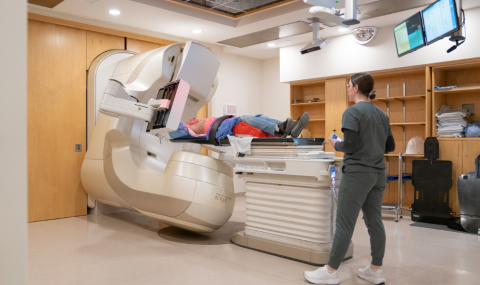Question
of the Week:
|
|
Answer:
Qs/Qt
is a measurement of pulmonary shunt. It describes the percentage
of blood that reaches the left side of the heart without picking up oxygen.
A normal Qs/Qt is .05....in other words, 5 % of the blood that travels
from the lungs to the left side of the heart arrives without picking up
oxygen. Qs/Qt represents the pooled average of blood from all regions
of the lungs.
A Qs/Qt > .05 indicates that an increased amount of blood is reaching the left side of the heart without picking up new oxygen. This occurs when blood flows past areas of lung where the alveoli have reduced or no ventilation. A V/Q mismatch refers to gas exchange units where blood flow (perfusion) exceeds air flow (ventilation). Areas that are perfused with no ventilation are referred to as physiological or true shunts. When the number of V/Q mismatches or true shunts increase, there is an increased contribution of poorly oxygenated blood to the arterial blood. This results in an increased shunt (Qs/Qt).
Reduced ventilation often occurs as a result of pulmonary edema or secretions. At room air (.21 FiO2), 21% of the air inside the alveoli is oxygen. An increase in the FiO2 doesn't change the volume of air, rather, it increases the percentage of the air that is oxygen. When V/Q mismatching is present, Qs/Qt will rise. Increased FiO2 levels will often be sufficient to correct the low PaO2 levels that develop. A large increase in the Qs/Qt occurs when the number of true pulmonary shunts increase (unventilated/perfused alveoli). An increase in the FiO2 will have little affect on the PaO2 when true shunting is the cause because air is not reaching the gas exchange area. The only way to increase the PaO2 when true shunting exists is to re-expand the alveoli with mechanical ventilation and PEEP, to increase the surface area for gas exchange.
A Qs/Qt of .10 - .20 indicates an increased shunt that can usually be managed with increased concentrations of inspired oxygen. A shunt of .20 - .30 represents a more serious oxygenation problem. A shunt of .31 represents a very significant gas exchange deficit, where increased FiO2 levels are generally insufficient to correct the problem. Mechanical ventilation with increased PEEP will be needed to improve the low arterial oxygen level (by reinflating areas of reduced ventilation).
References:
Sessler, C. & Fowler, A. Structural basis of pulmonary function. in Shoemaker, W et al. Ed. The Textbook of Critical Care 4th Ed. Saunders: Philadelphia. pp 1167-1168.
Thelan,
L., Urden, L., Lough, M., & Stacy, k. (1998). Critical Care Nursing.
Diagnosis and Management. 3rd Ed. Mosby: Toronto. pp. 645-646.



